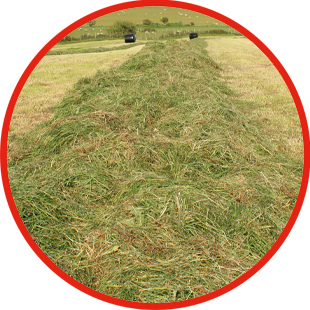
Thank you to everyone who visited us on Svenska Foder's stands at Borgeby FältDagar and Brunnby Lantbrukardagar in Sweden during June and July. It’s great to connect with visitors and we’re proud to be supporting Svenska Foder. Keep an eye out on our social media for other events that the Silotite team will be attending.
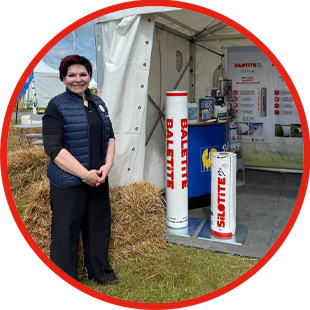
As Farm Safety Week shines a spotlight on safer practices across the industry, Silotite is urging farmers to rethink how they wrap their round bales, not just for feed quality, but also for safety.
Lloyd Dawson, sales director at Silotite, explains that small changes can easily be made to make every day seasonal jobs safer and more efficient.
“Handling round bales might seem like second nature to most farmers and contractors, but it’s exactly these familiar tasks where complacency creeps in, increasing the risk of serious injury,” he says.
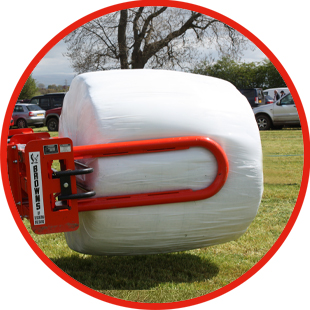
“We’ve seen how switching from traditional net wrap to net replacement film (NRF), such as Baletite, can significantly reduce those risks.
“Using film rather than net means bales can be more easily opened with a bale slice without the operator leaving the cab.”
When using NRF there is no need to climb out or get under the bale to remove netting, which is known to be one of the riskiest manoeuvres when handling up to a tonne of baled silage, particularly when working alone.
This also means there is less waste as the forage does not get caught in the netting, and the film is fully recyclable.
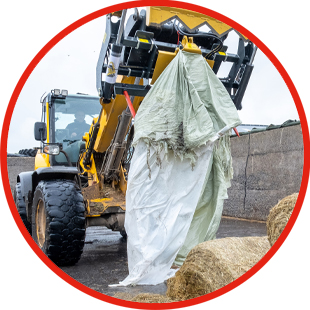
Beyond this, Mr Dawson says it makes bale stacking safer too.
“Bales bound and wrapped with film are more compact and uniform, which also helps when transporting and stacking,” he adds.
Safe stacking is crucial to prevent collapses that can cause serious injury or damage.
“When stacking round bales, we always recommend following HSE guidance: stack on level ground, no higher than three bales high and always use a stacking pattern that interlocks each layer to prevent movement,” explains Mr Dawson.
“The consistency and shape of a film-bound bale make this far easier to achieve.”
With farming consistently ranking among the most dangerous professions in the UK, small changes to routine tasks can make a big difference.
Using NRF not only improves forage quality and reduces waste, but also supports safer working practices, from the field to feed out.

With the varied growing conditions experienced this year, Silotite’s sales manager, Paul Johnson, provides an insight to best optimise your silage in both extremes of dense or poor grass growth.
For a denser crop, it’s worth taking some consideration for the extra bale density and weight, as this will put increased pressure on both machinery and wrapping materials. Ignoring this may impact the long term storage of your bales.
From a machinery perspective, during baling, it can help to stop and take extra time to allow bales to settle when they leave the wrapping table. Dropping heavier bales whilst on the move is more likely to cause splitting from the sudden shift of crop weight within the bale.
Do not overload bales and stop when indicated, as the heavier crop will form a full size bale much faster. It can also help to reconsider pressure settings on your baler, as a lower setting, such as 7 or 8, will suffice for good bale density.

For binding the bale, you should consider applying more layers of binding material, whether this be net or balerfilm. The binding material is responsible for primarily applying the holding force to maintain the bale shape and prevent slumping, not the outer wrap. A high holding strength, such as with Baletite balerfilm, will help to maintain density and keep oxygen out.
Finally, it is worth thinking about the number of layers of outer wrap for application on heavier bales. If the bales are intended for longer storage, a minimum of 6 layers will help fermentation by keeping air out. Denser bales are well-suited for the bottom of a stack, and therefore will benefit from the extra protection from more layers of film and a high quality balewrap.
Taking extra time and using the appropriate binding and wrapping materials will make best use of a bumper crop and be worthwhile at feedout.
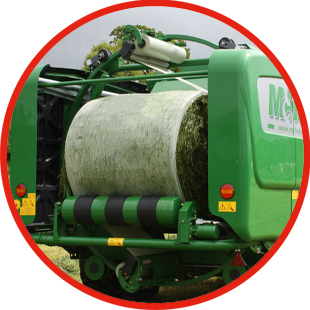
On the other end of the scale, the drier weather that many have experienced over the past few months, may have lead to poor grass growth. In this situation, the importance of good storage is vastly increased to make best use of the available crop.
The use of balerfilm, will limit the expansion of the bale and oxygen ingress, that can lead to costly spoilage. Minimising losses to quality and energy will create a more valuable bale when it comes to feeding.
It is once again important to apply the recommended number of film layers and to select a quality balewrap for trouble-free storage.
